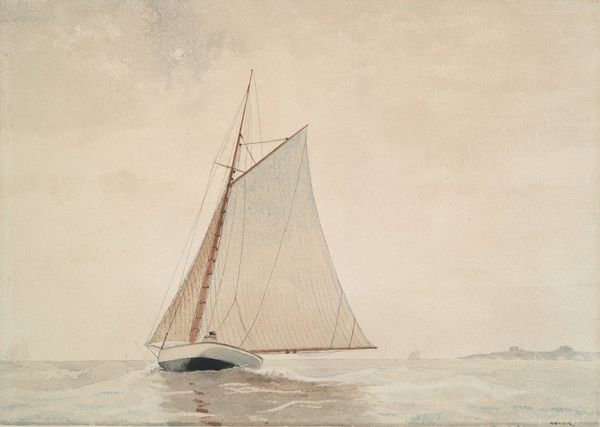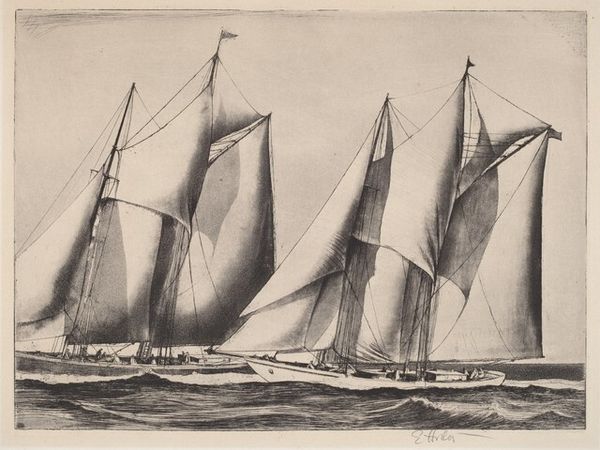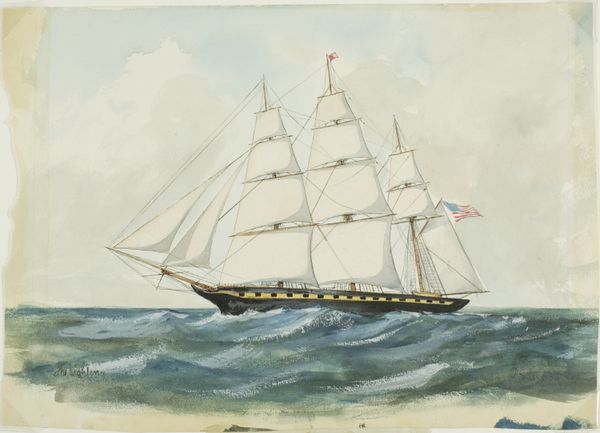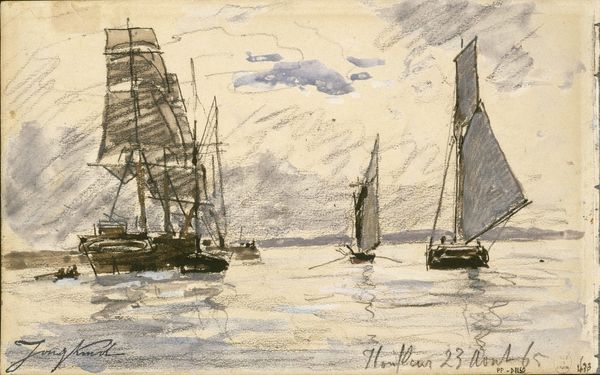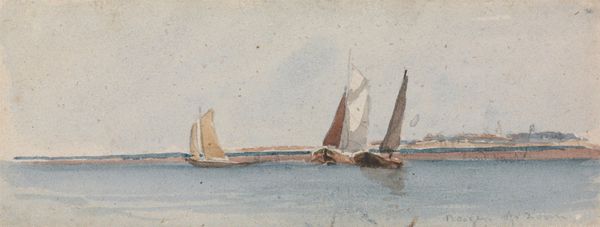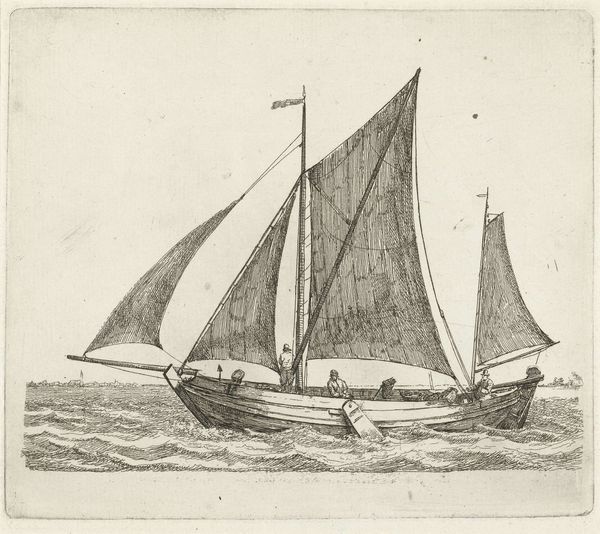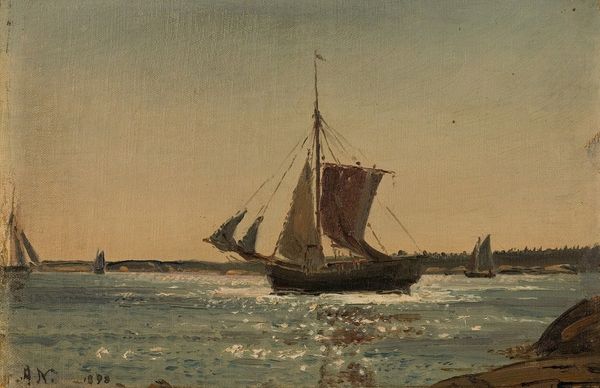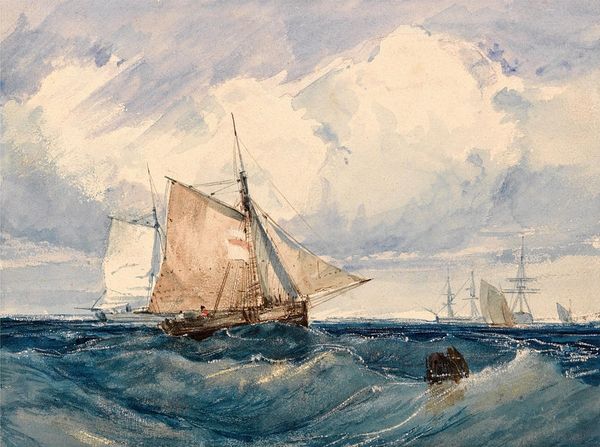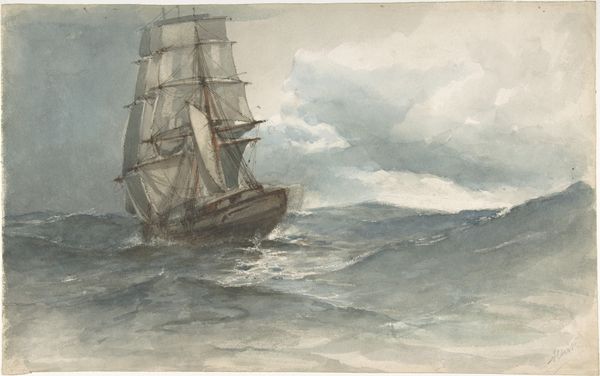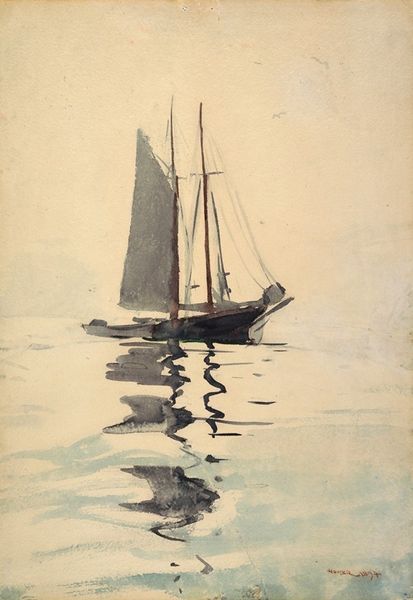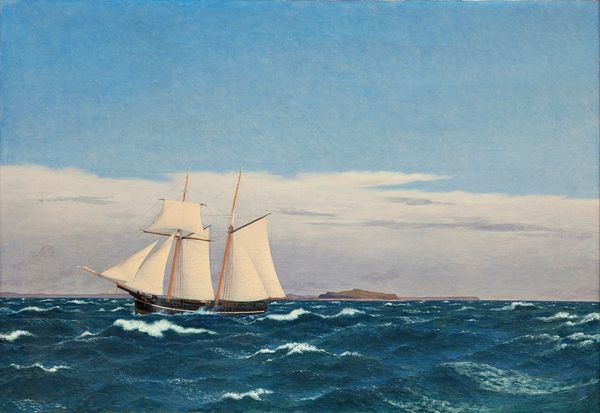
painting, watercolor
#
painting
#
impressionism
#
landscape
#
oil painting
#
watercolor
#
mixed media
#
watercolor
#
realism
Copyright: Public Domain: Artvee
Editor: Winslow Homer's *Gloucester Schooner,* likely from around 1880, rendered in what appears to be watercolor and perhaps mixed media. There's a certain tranquility to the scene, almost meditative, with the way the light hits the water. How do you read this piece? Curator: This watercolor offers a window into the late 19th century and the rising popularity of coastal leisure. Homer, already known for his depictions of rural America, turns here to the sea, specifically Gloucester, a site economically reliant on fishing. What story do you think he's trying to tell about American life through this focus? Editor: I suppose he’s romanticizing the life of a sailor or fisherman, even if the actual experience must have been really challenging and complex. It’s such a simplified image – the boat, the water, some other small boats – not a person in sight. Curator: Exactly! It is simplified. But look at the date again, circa 1880. Think about the art world. Impressionism was gaining traction. How does Homer's rendering – the broad brushstrokes, the concentration on light and shadow – connect with that broader artistic shift? Also, the Civil War had just ended; is there some way to think of how Americans might desire some escapism? Editor: Oh, that’s true – he does use lighter colors than I'd expect if he was trying to capture the brutal labor taking place at sea. I suppose these works sold to middle class people eager to get away, so there’s demand for that type of painting. And maybe, post-war, a scene of unity and peace, even at sea, might have felt welcome. Curator: Precisely. The painting's value lies not just in its aesthetic qualities, but in its reflection of evolving social and cultural landscapes of the late 19th century. It makes you wonder what role these paintings of coastal life have in creating our ideas about that time period, right? Editor: Definitely, I see what you mean! It’s made me consider the painting more as a cultural artifact and less just a pretty seascape. Curator: Precisely! It's art's social life that keeps it relevant and interesting to people of all sorts.
Comments
No comments
Be the first to comment and join the conversation on the ultimate creative platform.
